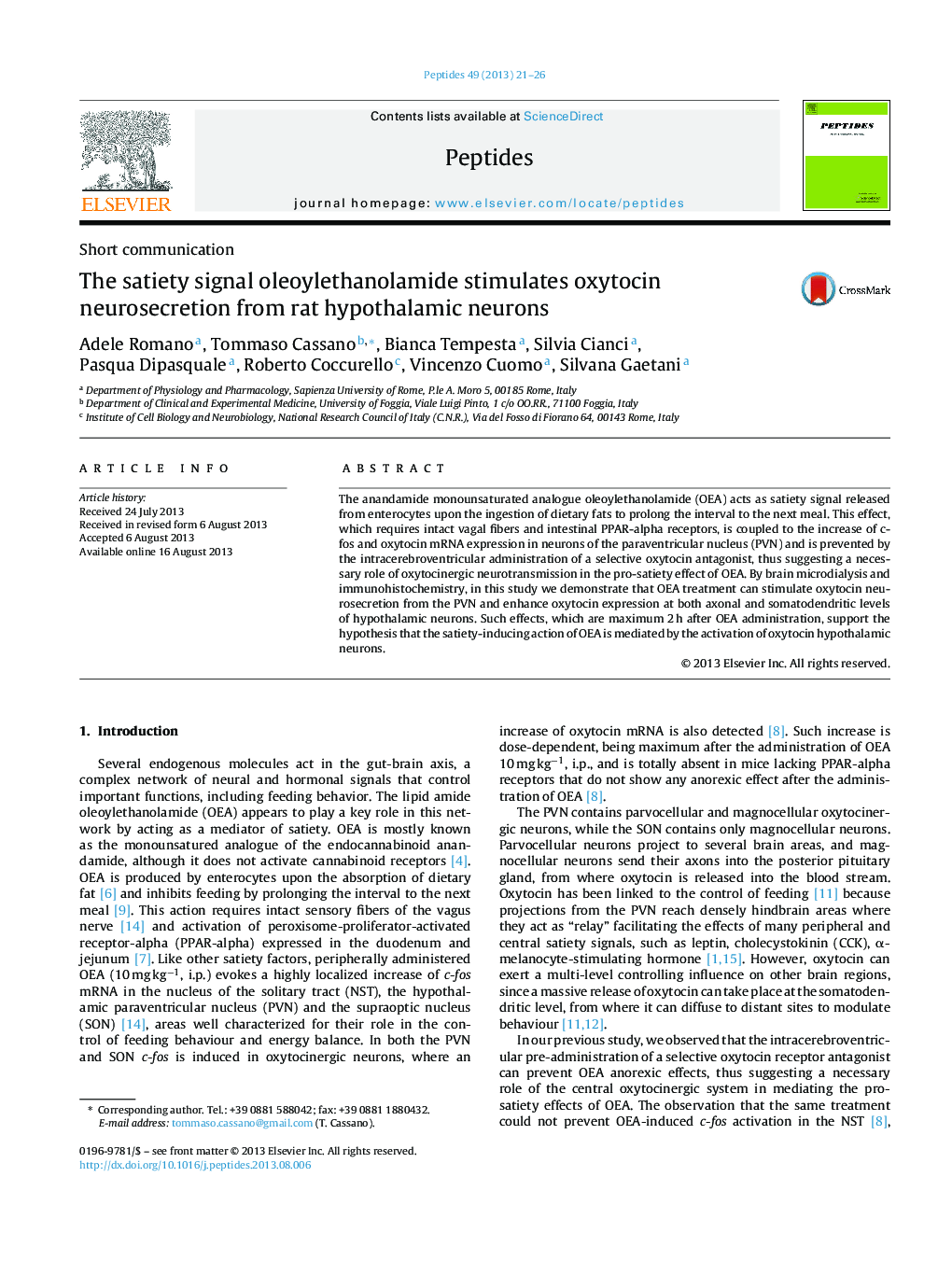| Article ID | Journal | Published Year | Pages | File Type |
|---|---|---|---|---|
| 2006184 | Peptides | 2013 | 6 Pages |
•The administration of OEA increases oxytocin expression in neurons of the PVN.•Causes oxytocin accumulation at the nerve endings in the neurohypophysis.•Stimulates oxytocin neurosecretion at the somatodendritic level in the PVN.•OEA may represent a novel target for modulating the oxytocinergic system.
The anandamide monounsaturated analogue oleoylethanolamide (OEA) acts as satiety signal released from enterocytes upon the ingestion of dietary fats to prolong the interval to the next meal. This effect, which requires intact vagal fibers and intestinal PPAR-alpha receptors, is coupled to the increase of c-fos and oxytocin mRNA expression in neurons of the paraventricular nucleus (PVN) and is prevented by the intracerebroventricular administration of a selective oxytocin antagonist, thus suggesting a necessary role of oxytocinergic neurotransmission in the pro-satiety effect of OEA. By brain microdialysis and immunohistochemistry, in this study we demonstrate that OEA treatment can stimulate oxytocin neurosecretion from the PVN and enhance oxytocin expression at both axonal and somatodendritic levels of hypothalamic neurons. Such effects, which are maximum 2 h after OEA administration, support the hypothesis that the satiety-inducing action of OEA is mediated by the activation of oxytocin hypothalamic neurons.
